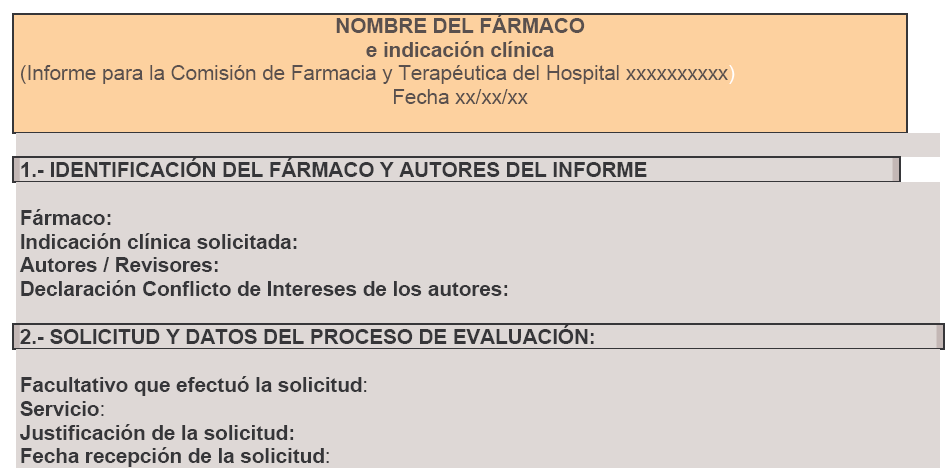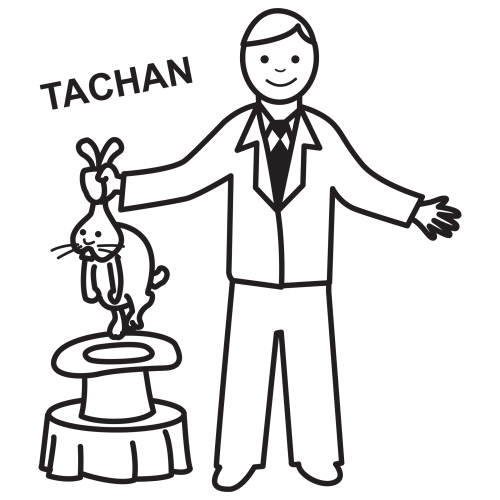GUIDANCE FOR COMPLETING ADVICE AND INFORMATION FORM FOR REVIEW
UNOFFICIAL FUNDS MANUAL OF GUIDANCE MARCH5 GUIDANCE OFFICE DUE TO ORANGE ROTARY
CARDS EXERCISE FACILITATOR GUIDANCE LEARNING OUTCOME TO GAIN
FORESHORE ACTS 1933 TO 2011 GENERAL GUIDANCE
GENERAL RISK FORM ASSESSMENT GUIDANCE – LABORATORY INTRODUCTION
GUIDANCE FOR THE PLACEMENT OF VOLUNTEERS PLACEMENT OF

Guidance for completing Advice and Information Form for Review of EHC Plan
The school or institution must seek advice and information from all those invited about the child or young person’s progress towards achieving the outcomes specified in the EHC plan and any other matters relating to their progress.
1. Background Information
Any relevant background information about the child or young person that gives an overview and summarises your involvement since EHC Plan was issued or last reviewed, the support you provided and/or intervention.
2. Views and Aspirations - The views, interests and aspirations of the child, their parents or the young person
This informs any amendments to Section A of an EHC Plan
This section considers the views of the child/young person and the parent/carers relating to their progress since the EHC Plan was issued/reviewed.
What is important to the child or young person - their aspirations and goal: what has helped and what did not help
What the child or young person is particularly good at: what his or her greatest achievements have been: what people admire about them
How the parent/carer views the past year or from the last review – what has helped and hopes for the future.
3. Review of child or young person’s progress, outcomes and targets
This relates to Section B to E of an EHC Plan
This section should focus on reviewing the child/young person’s progress towards achieving the outcomes specified and consider whether the education, health and care needs, outcomes and supporting targets remain appropriate.
Additional evidence of educational progress is required within the review report (Section 3). The aim is to compare the current levels of attainment with the previous levels to determine progress and to comment if the level is below expectations.
Reference in the report should made to the following four areas as detailed in the EHC Plan as appropriate:
communication and interaction
cognition and learning
social emotional and mental health
Sensory and/or physical.
Remember if you are suggesting changes that:
Information should be written as narrative and should describe the impact the EHC plan has had on the child or young person’s learning and development.
Each area of need should begin with a summary statement about the child or young person’s individual needs in that area followed by details and examples of their strengths and needs attainments or developmental milestones in younger children and their rate of progress taking into account the support provided.
Any changes to the outcomes or targets should be detailed. The long term outcomes should aim toward what the child/young person will achieve by the end of the key stage, next 3 years or next transition point, Short term outcomes are those that the child or young person could realistically be expected to achieve within 12 months. Targets are the educational and developmental interim targets for the next review period based on the outcomes identified in the EHCP.
Outcomes should capture the overall benefits or difference the provision will make for the child or the young person under the relevant areas of need. Outcomes should be forward looking, personalised and SMART.
The outcomes sought for the child or young person lead towards outcomes for adult life: towards education, learning and work; towards friends, relationships and community; towards being as healthy as possible and towards independent living.
4. Review Provision and Support
This relates Section F to H of an EHC Plan
This section reviews the special educational provision and support (i.e. the arrangements that are required to meet the identified special educational needs). The key question is whether the special educational provision and support is effective in ensuring good progress toward outcomes. Consideration needs to be given to whether changes are needed to the support that is provided to help child/young person achieve the outcomes or are changes required to the outcomes.
Reference in the report should be made to:
What is working well
Are any changes needed to the provision and/or support.
The areas within the provision section that need to be considered are as follows:
curriculum (including any appropriate modifications/exclusions to the National Curriculum, teaching strategies and approaches to deliver the curriculum, any focused interventions)
environment, facilities, equipment and resources i.e. physical environment, specialist materials or equipment
staffing arrangements (level of expertise, frequency and type of support, support across the school day, individual/ small groups/ within class support, home school liaison and pastoral care arrangements)
support from other agencies and or informal support (family and community support)
preparing for adulthood – year 9 onwards for transition planning in preparation for adulthood, including employment, independent living (ability to travel independently) and participation in society
Remember when suggesting changes that there should be a special educational provision for each identified special educational need and its related outcome. It should also be clear how the provision will enable each outcome to be achieved. Special educational provision should be described with sufficient specificity to enable this to be quantified (i.e., what, when, where, by whom, etc.).
The health and social care provision made for the child or young person will need to be reviewed to determine its effectiveness in ensuring good progress towards outcomes and to consider any changes to this provision.
5. Recommendations
The purpose of the EHC Plan review is as follows:
it should consider the continuing appropriateness of the EHC plan in the light of the child or young person’s progress during the previous year or changed circumstances (including change of placement, funding, personal budget, transport) and;
whether changes are required including any changes to:
outcomes,
enhanced provision
change of educational establishment or
whether the EHC plan should be discontinued
This section of the form should detail any recommendations in relation to the above. It should comment on the child/young person’s progress and detail any changes if required. There should be clear recommendations recorded. If a change of placement is being suggested then this should be reflected in changes to needs, outcomes and provision sections of the EHC. If on the basis of the evidence a change of placement (Section I) is required then any amendments should clearly indicate the type of placement needed. Remember if a change of placement is required then a transition plan will need to be considered to support the transfer. If it is considered that an EHC is no longer required because the child/young person has made good progress so that the needs can be met within the local offer then this should be reflected in the report. It is expected that this will be discussed by the key worker with the parent/carer before the meeting.
GUIDANCE ON DISABILITY AND REASONABLE ADJUSTMENTS INTRODUCTION
HEALTH AND SAFETY – GUIDANCE SHEET GS2
INCLUSIVE EDUCATION AND LEARNING POLICY GUIDANCE IMPLEMENTATION
Tags: advice and, seek advice, advice, review, guidance, information, completing
- KABLOVSKA TV ORTAK VOJVODE RADOMIRA PUTNIKA BB 70270 Š
- 7 LEÓN GUANAJUATO A TRECE DE AGOSTO DEL AÑO
- MAINECARE ADJUSTMENT REQUEST USE THE MAINECARE ADJUSTMENT REQUEST
- „MINDEGY HA ROSSZUL JÁRUNK CSAK A MÁSIK FÉL IS
- ACT WAGES & EARNINGS GUIDE ACT WAGES & EARNINGS
- REGLAS DEL JUEGO REGLA 1 EL TERRENO DE JUEGO
- Profesor Rndr Miloslav Pospíšil Drsc nad Hrobem Profesora Miloslava
- MINISTERIO DE VIVIENDA Y ASENTAMIENTOS HUMANOS CUESTIONARIO SOBRE
- LIST OF SERVICE UNITS PROVIDING FEE WAIVING SUBSIDIES UNDER
- MARKING GUIDELINE 0 NC…(E)(F)V SUBJECT NATIONAL CERTIFICATE (VOCATIONAL) CONSTRUCTION
- ISPARTA İL GIDA TARIM VE HAYVANCILIK MÜDÜRLÜĞÜ ŞUBE MÜDÜRÜSORUMLU
- FØR DU LESER NEDENSTÅENDE UTKAST TIL SAMARBEIDSAVTALE VÆR OPPMERKSOM
- NATIVE VEGETATION MANAGEMENT PLAN AGREEMENT BETWEEN THE NATIVE VEGETATION
- PH METRE TEKNİK ŞARTNAMESİ CIHAZ SULU ORTAMLARDA PH ÖLÇÜMÜNÜN
- WYKAZ PODMIOTÓW LECZNICZYCH W KTÓRYCH REALIZOWANE BĘDĄ SZCZEPIENIA PRZECIWKO
- C SOTO SN TFNO 948 13 02 60 FAX
- KIELCE DNIA 16 LIPCA 2015 ZNAK ZKB III 241012015
- KICY AM850 PROGRAM SCHEDULE WEEKDAYS 500 AM
- IOWA DEPARTMENT OF NATURAL RESOURCES SINGLE USE LANDFARM (PCS)
- ……………………… …………………… (IMIĘ I NAZWISKO) (MIEJSCOWOŚĆ DATA) ……………………… ………………………
- ASOCIACIÓN INDICE EVALUACIÓN DEL PROYECTO 3 EVALUACIÓN DE
- USER SETUP GUIDE THE PRINCIPAL USER (“SYSTEM ADMINISTRATOR”)
- SLAVNOSTNI NAGOVOR PREDSEDNIKA DRŽAVNEGA SVETA MITJE BERVARJA NA OSREDNJI
- POPIS STUDENATA PO VJEŽBOVNIM SKUPINAMA AKGOD 20202021 NEUROLOGIJA
- CLASIFICACIÓN DE LOS RECURSOS EN EL APRENDIZAJE DE UNA
- RELACION NO1 1 COSTOS Y GASTOS TOTALES DE
- STATE OF GEORGIA GENERAL LIABILITY INCIDENT REPORT FORM IF
- CHINESE LANGUAGE & CULTURE PROGRAMMES (NONDEGREE) ADMISSION 2017,ZHEJIANG UNIVERSITY
- JOB DESCRIPTION EXAMINATION INVIGILATOR CAUSAL PARTTIME DURING EXAM PERIODS
- LAMPIRAN A2C PERATURAN GUBERNUR NUSA TENGGARA BARAT NOMOR TAHUN
REVIEW OF ALTERNATIVE DISTRIBUTION METHODOLOGIES FOR THE STREET CONSTRUCTION
 Urbanismo y Arquitectura Gambin Slpu Ángel Gambín Pallarés
Urbanismo y Arquitectura Gambin Slpu Ángel Gambín Pallarés OPEN FIT HEARING AID FITTING PACK (CARE AND MAINTENANCE
OPEN FIT HEARING AID FITTING PACK (CARE AND MAINTENANCE P OR FAVOR ENVÍE ESTA FICHA CUMPLIMENTADA A INFORMACIONVOLUNTARIADOMADRIDORG
P OR FAVOR ENVÍE ESTA FICHA CUMPLIMENTADA A INFORMACIONVOLUNTARIADOMADRIDORG W ORKSHEET B5D 1 THE RESPIRATORY SYSTEM YOU
W ORKSHEET B5D 1 THE RESPIRATORY SYSTEM YOU TEMA 43 SELECCIÓN DE MEDICAMENTOS CONCEPTO Y NECESIDADES CRITERIOS
TEMA 43 SELECCIÓN DE MEDICAMENTOS CONCEPTO Y NECESIDADES CRITERIOSMODEL OFFERTEAANVRAAG ONTZURING PRESERVATION TECHNOLOGIES BV PLUIMES 18 2925
5 DJS JDS GDS DEMOKRATISCHE JURISTINNEN UND JURISTEN DER
NA TEMELJU ČLANKA 15 ZAKONA O SAVJETIMA MLADIH (
 REFERRAL FOR A DERBYSHIRE SPECIALIST SUPPORT SERVICE FOR CHILDREN
REFERRAL FOR A DERBYSHIRE SPECIALIST SUPPORT SERVICE FOR CHILDREN GRUPA 1 PROJEKT WSPÓŁFINANSOWANY PRZEZ UNIĘ EUROPEJSKĄ W RAMACH
GRUPA 1 PROJEKT WSPÓŁFINANSOWANY PRZEZ UNIĘ EUROPEJSKĄ W RAMACH ENCUENTRA LAS PALABRAS EN LA SOPA DE LETRAS ARQUEOLOGÍA
ENCUENTRA LAS PALABRAS EN LA SOPA DE LETRAS ARQUEOLOGÍA CONFIRMACION DE LA PARTICIPACIÓN EN SERVICIOS DEL PLAN FAMILIA
CONFIRMACION DE LA PARTICIPACIÓN EN SERVICIOS DEL PLAN FAMILIAREQUERIMENTO DE INFORMAÇÃO Nº 784 DE 2020 NOS
DECLARACIÓN DE PROPÓSITO DE LA IGLESIA INTRODUCCIÓN
CONTRACT STANDARD DE CONSTITUIRE A DREPTULUI DE SERVITUTE PENTRU
JOGA NI NEDOLŽNA ŠALA (RESI NAS HUDEGA AMEN) NEW
 BERE NAIA ESKATZAILEAREN DATUAK DATOS DE LA PERSONA
BERE NAIA ESKATZAILEAREN DATUAK DATOS DE LA PERSONAДОГОВОР № О ЦЕЛЕВОМ ОБУЧЕНИИ ПО ОБРАЗОВАТЕЛЬНОЙ ПРОГРАММЕ
 16 DECRETO NUMERO 2816 DE 2006 HOJA NO CONTINUACIÓN
16 DECRETO NUMERO 2816 DE 2006 HOJA NO CONTINUACIÓN